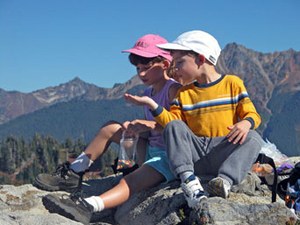Are you trying to gain control over children or with children? Trying to
gain control over children is hard. It takes constant effort. You have
to be very vigilant to police the action of children so you can
implement your control tactics—usually punishment and rewards. You have
to catch children being “good” so you can reward them and catch them
being “bad” so you can mete out the punishment. It never ends—and what
happens when you are not around? If you are very good at being in
control over children what have they learned? Have they learned
self-discipline, respect for self and others, responsibility,
problem-solving skills, cooperation?
Trying to gain control over children is disrespectful and greatly
decreases your chances of winning cooperation. Disrespectful methods
invite distance and hostility, rebellion, revenge, sneakiness to avoid
getting caught, or, worst of all, a child’s developing belief that, “I
am a bad person.” On the other hand, respectful methods invite
closeness, trust, and cooperation.
Winning Cooperation
The best way to make a connection and win children over is to be
respectful. One of the best ways to be respectful is to “get into the
child’s world” and express understanding of the child’s feelings.
Showing empathy is not the same as condoning. A really nice touch is
sharing a time when you might have felt the same. These are the steps to
create the connection to increase the chances that you can work for
correction because children are likely to listen to you AFTER they feel
listened to.
Correction Does Not Involve Punishment
In can be so difficult for parents and teachers to think they are not
doing their job if they don’t engage in a lecture or some kind of
consequence (usually a poorly disguised punishment). This will take you
right back to the consequences (resistance and/or rebellion) you will
experience by trying to gain control over instead of with your children.
What do children learn when they are respectfully involved in finding a
solution that works for everyone? Thinking skills, problem-solving
skills, respect for self-and others, self-discipline, responsibility,
listing skills, motivation for following the solution they have helped
create. The list could go on and on. And, what better way to achieve
control with, and to win cooperation.
Once
you have achieved a connection you have created an atmosphere where you
can focus on a solution together. You have won cooperation.









